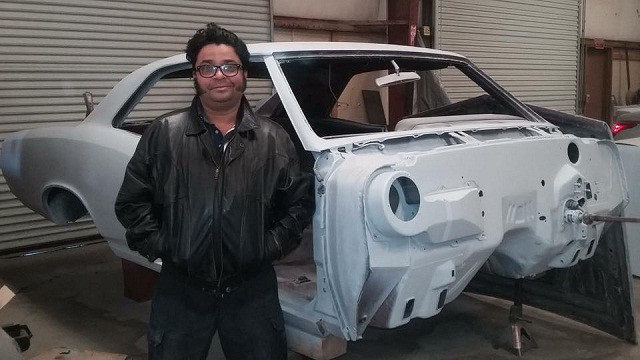Last Updated on December 17, 2023 by Leepu Da Maxim
Catalytic converters are used to reduce emissions in internal combustion engines. Some cars have multiple catalytic converters to meet stringent emission standards. Most high-end and modern cars follow strict emission qualifications, which necessitates additional neutralization of toxic emissions.
Key Takeaways
- Regulations in many countries require cars to meet strict emissions standards and it is a common reason many cars have catalytic converters
- Having two or more catalytic converters in the exhaust system can increase the efficiency by removing more pollutants from the exhaust gases
- using multiple catalytic converters can increase the overall durability of the exhaust system
- Usually a catalytic converter generate a significant amount of heat but multiple catalytic converters can equally share the heat and reduce the risk of overheating
Why do some cars have two catalytic converters?
Most cars have one catalytic converter as standard. However, some cars have two or more catalytic converters to meet emission regulation standards. Catalytic converters help control the emissions from your car by converting toxic gases to less toxic forms.
Most modern and high-end cars have strict emission qualifications; that’s why they come with two catalytic converters. One converter performs the primary function of a catalytic converter while the other neutralizes the emissions from the set of pipes before they are released.
Generally, every car has one catalytic converter per exhaust pipe, so if a car has a dual exhaust system, it will have two catalytic converters. To understand how multiple converters reduce emissions, you need to know the function of a catalytic converter and how it works. Let’s take you through that.
What is the function of multiple catalytic converters?
A catalytic converter is a device that controls emissions by purifying exhaust gases with the help of noble metals such as platinum, palladium, and rhodium. They work through a process of reduction and oxidation and are filled with two sets of honeycomb catalysts, one for oxidation and the other for reduction.
Exhaust gases are pumped into the catalytic converter from the engine in their harmful state. Catalytic converters need high temperatures to break down toxic exhaust gases into less toxic forms. The gas molecules are split into atoms and rearranged into less harmful by-products such as carbon dioxide, water, and nitrogen.
Catalytic converters use a catalyst to induce the engine’s redox reaction to toxic emissions. This chemical reaction neutralizes the toxins to allow them to vent safely into the atmosphere. Vehicles with multiple catalytic converters have more than one exhaust pipe, and each one works in conjunction with a catalytic converter. The first catalytic converter breaks down gases from the engine, while the second produces a chemical mixture to neutralize residual toxins before they are released into the atmosphere.
Types of catalytic converters
Catalytic converters come in two different types: two-way converters and three-way converters. Below is a summary and comparison of how each works:
| Two-way catalytic converters | Three-way catalytic converters |
| It is also referred to as an oxidation catalytic converter. It carries out two simultaneous tasks: Oxdizing carbon monoxide to carbon dioxide 2CO + O2 = CO2 oxidation of hydrocarbons(unburnt fuel) to carbon iv oxide and water CxH2x+2 + [(3x+1)/2] O2 → x CO2 + (x+1) H2O (a combustion reaction) Two-way converters are mostly used in diesel engines. They were discontinued in gasoline engines in 1981 because of their inability to control nitrogen oxides. | Three-way catalytic converters are also referred to as oxidation-reduction catalytic converters. They have an added advantage of controlling NOx emissions(Nitric oxide and nitrogen dioxide) Three-way catalytic converters carry out three simultaneous tasks: reduction of nitrogen oxides to nitrogen C+ 2NO2= CO2 +2NO CO + NO=CO2 + 1/2 N2 2CO + NO2=2CO2 + 1/2N2 H2 + NO= H2O + 1/2N2 oxidation of carbon, carbon monoxide and hhydocarbons to caron doxide C +O2 = CO2 CO + 1/2O2 = CO2 Three-way catalytic converters are used on gasoline-powered vehicles to meet stringent emissions regulations. |
What happens when you drive with a bad catalytic converter?
If your catalytic converter is faulty, you can still drive but keep in mind that driving in that condition clogs your catalytic converter. A clogged catalytic converter causes many problems such as engine overheating, excessive emissions, or engine not starting. Let’s delve into some of these issues in detail:
- Engine overheating
A clogged catalytic converter causes loss of power and overheating of the engine because heat cannot flow through easily. When the heat doesn’t exit easily, a pressure backflow is created because the engine is trying to push out more gas than the exhaust system can let out. This pressure causes the engine to overheat.
- Failing emissions test
A faulty catalytic converter will make you fail the vehicle emissions inspection test. A failed test means your car won’t be registered, so you won’t be able to drive the car legally. If you drive a car that hasn’t passed emissions tests, you will be fined for non-compliance.
How do I tell if my catalytic converter needs to be replaced?
Your car will always show signs when the catalytic converter needs to be replaced. Some of the warning signs you will notice when the catalytic converter is failing are:
- The check engine light comes on. The check engine light may come on for various reasons, including when the oxygen sensor and the fuel-air ratio sensor detect a problem.
- Your engine produces a rattling noise when the engine is first turned on
- The exhaust gas from your car has a pungent smell that is similar to that of rotten eggs or sulfur
- Diminished engine performance, which causes slow acceleration, reduced power, and poor fuel economy
If you notice any of these signs, it is advisable to visit your mechanic immediately to prevent further damage. Sometimes, the catalytic converter only needs to be cleaned or repaired, but other times, it may need replacing.
The cost of repairing and replacing a catalytic converter is very costly, and that’s why most people with older cars consider it a last resort. It can cost anywhere between $1045 to $2500 for parts and labor.

What causes both catalytic converters to fail?
For a vehicle with multiple catalytic converters, it is rare for both converters to fail simultaneously. However, some people have experienced this scenario which can be stressful considering the cost of repairing converters.
The most common reason why both catalytic converters fail at the same time is major issues in the engine, such as spark plug failure and faulty oxygen sensors. Contamination from seeping engine oil can block the air passage and cause soot to coat the catalyst making the converters fail.
Another reason why both catalytic converters can fail at the same time is excessive heat. If the engine computer runs too rich or lean, it generates more heat than the catalytic converter is designed to handle. This excessive heat can cause both converters to fail very quickly, but the check engine light will come on before they do. That is why your mechanic advises you never to ignore the check engine light.
Why do people steal catalytic converters?
Catalytic converters are stolen because of the value of the metals found inside them. Catalytic converters are made up of precious metals such as rhodium, palladium, and platinum. These metals cost over $1,000 per ounce, and that’s why thieves steal them. The National Insurance Crime Bureau reports that there were 14,433 reported cases of catalytic converter theft in 2020, up from 3,389 in 2019.
How do I protect my car from catalytic converter theft?
Since catalytic converter theft is on the rise, you can prevent yours from being stolen by following these tips:
- Install a car alarm that is sensitive to vibrations
- Install a protective device under your car to prevent theft: steel gates, steel cables, and pipe shielding are perfect options
- Park your car in your garage whenever you are home or in safe areas with security cameras if outside.
Final word
Multiple catalytic converters come in handy to ensure that your car meets the emissions regulations. Most modern cars now have more than one catalytic converter to make them environmentally friendly. Catalytic converters are a target for thieves, so you need to take steps to keep your multiple converters from being stolen.
References:
https://itstillruns.com/car-multiple-catalytic-converters-7846978.html
https://itstillruns.com/car-need-two-catalytic-converters-7562299.html

Hi, I’m Leepu Da Maxim , a dedicated car enthusiast with over 10 years of experience in this field, and I’m thrilled to share my passion and expertise with fellow car enthusiasts like you. My journey began in my hometown West Jordan, Utah, where my fascination with the mechanics and design of cars sparked at a young age. Over the years, this passion has evolved into a commitment to providing accurate, insightful, and engaging information about all things automotive through CarsAmazing .
